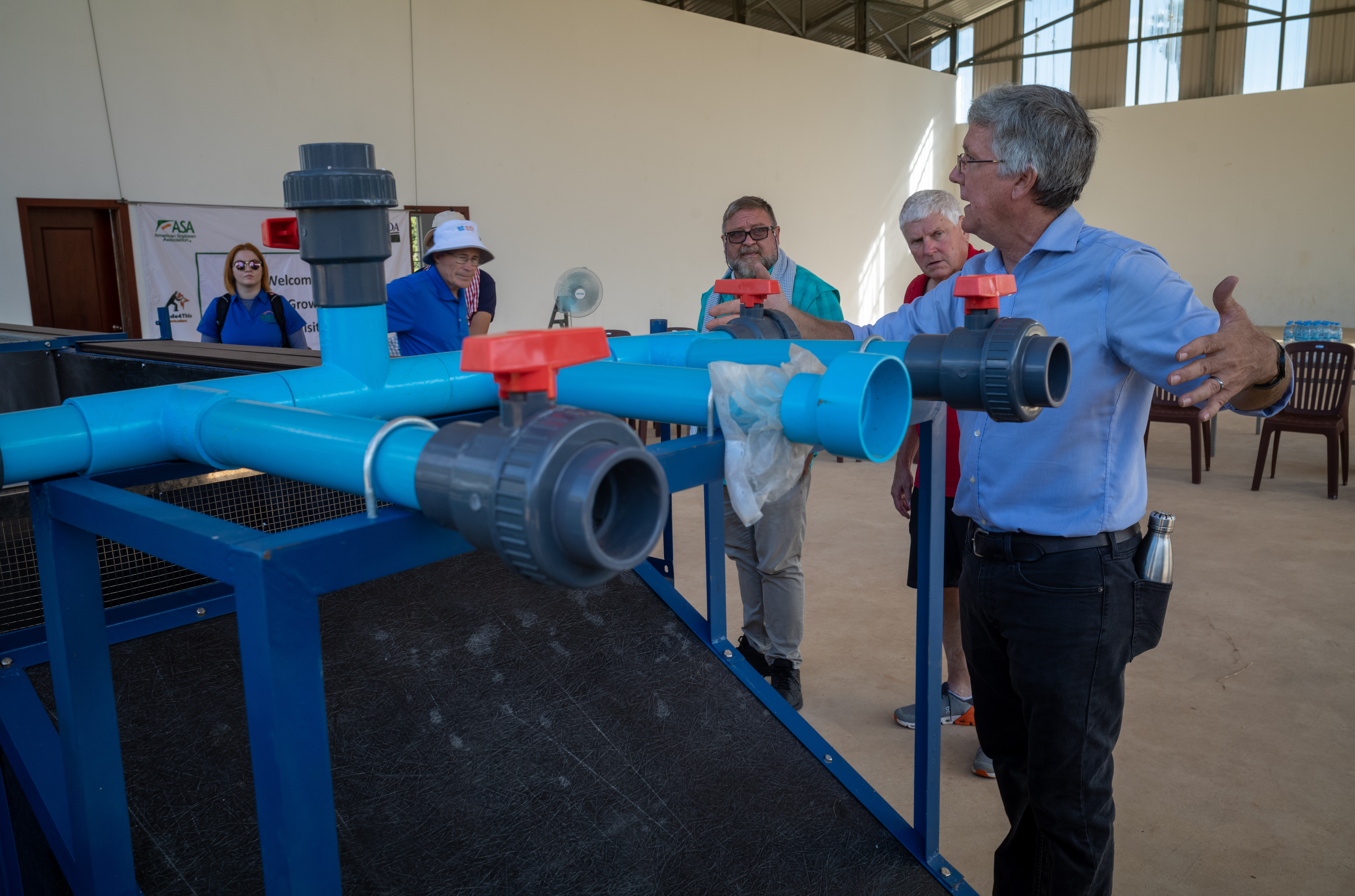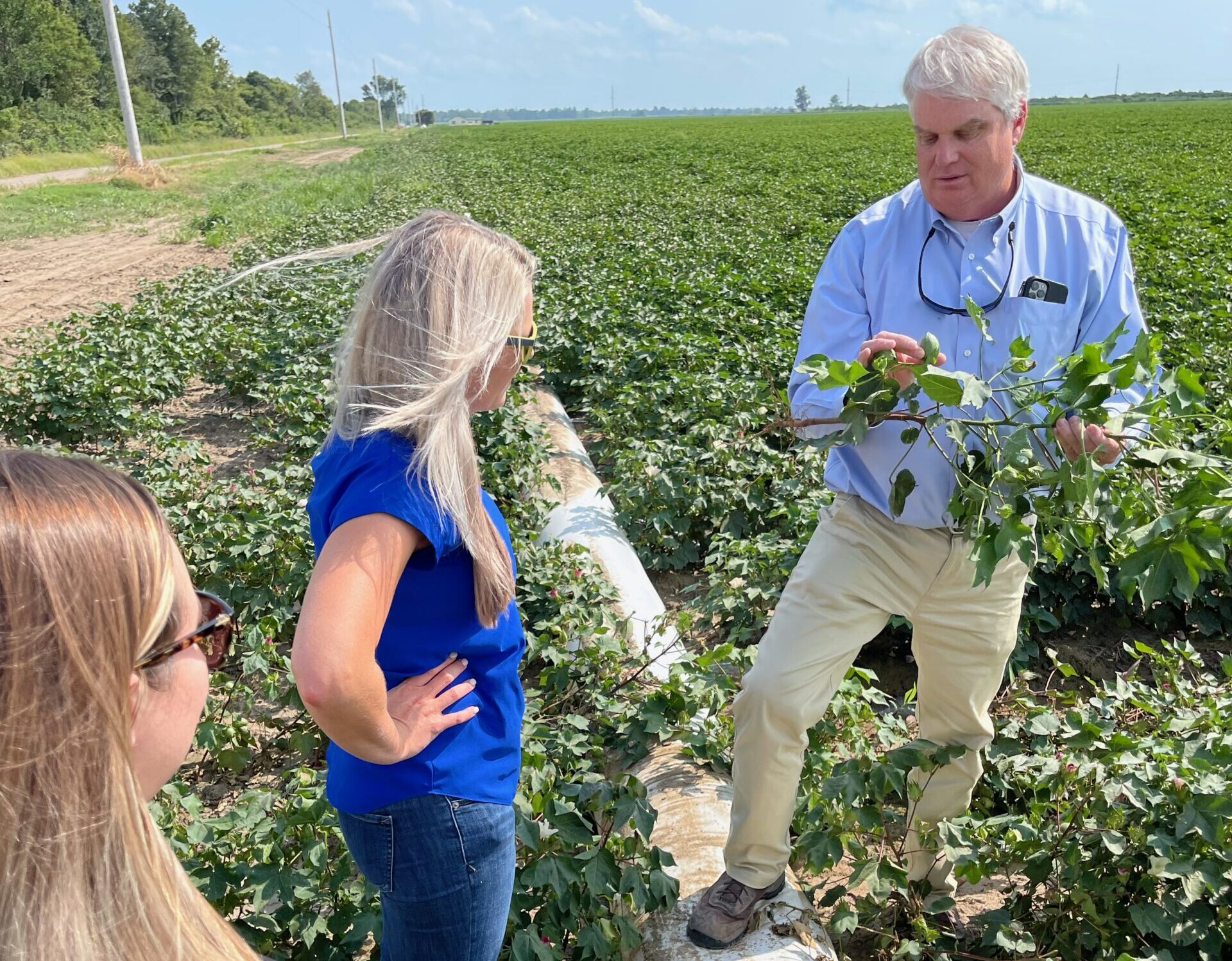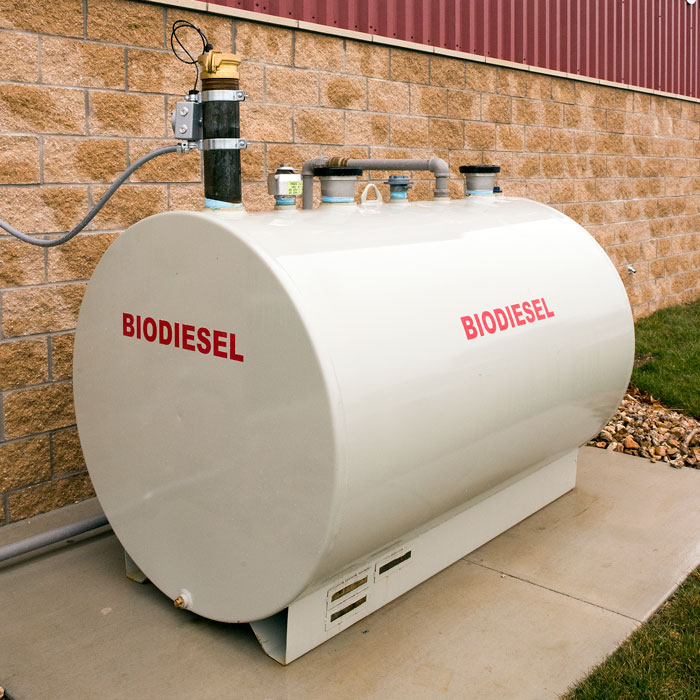The Missouri Soybean Merchandising Council is investing in ways to create a soy market in Cambodia through the utilization of in-pond raceway systems.
Missouri Soybean Merchandising Council (MSMC) funds are making it possible for the American Soybean Association’s World Initiative for Soy in Human Health (WISHH) to grow Cambodia as a long-term U.S. soy market. WISHH introduced the first Missouri soy checkoff-funded in-pond raceway systems (IPRS) in Cambodia in 2020 and is already working on fourth-generation models. These systems are built to help Cambodian farmers overcome their unique fish production challenges, which will allow them to use more soy-based pellet feeds.
Missouri soy checkoff resources continue to support WISHH’s work, including the ongoing services of a global aquaculture expert in Cambodia. Leonard Rodgers, Ph.D., WISHH’s aquaculture adviser in Cambodia, used his decades of experience to adapt raceway designs he worked with at Auburn University to meet the southeast Asian nation’s unique challenges. The resulting IPRS are a breakthrough technology that continues to improve.
“The most important takeaway from my time in Cambodia is things that work in Vietnam, Thailand and China don’t necessarily work here,” says Rodgers. “The biggest issue that Cambodian farmers face is they have a wet season and a dry season. During their dry season, the land becomes almost like a desert, so farmers struggle. If they don’t have rainwater or runoff, they are stuck. Vietnamese and Chinese aquaculture requires lots of water to flush through the ponds, so that isn’t an opportunity here.”
WISHH’s Cambodian IPRS have floats that allow them to rise and fall with the water levels in the ponds. Therefore, they offer the farmers a new management tool to keep production going despite the weather. The raceways also offer the farmers flexibility to move to different ponds. “You unbolt it, take it apart and move it,” says Rodgers.
The IPRS also help farmers manage fish in Cambodia where they traditionally use homemade feeds with rice bran as the main ingredient.
“It’s low in protein, so you have to feed a lot of it to put muscle on the fish,” says Rodgers.
“An in-pond raceway helps the farmers monitor their biggest cost outlay, which is feed,” stresses Rodgers. “Cambodian fish farmers’ feed costs usually constitute 70% to 90% of their cost of production. In an IPRS, farmers can monitor the feed as they put it in and make sure they don’t overfeed.”
Meanwhile, WISHH is working with Cambodian feed mills to manufacture soy-based feeds for aquaculture. One of these feed mills is already a U.S. soy customer and has just made a multimillion-dollar expansion. Through the United States Department of Agriculture (USDA) Food for Progress Project in Cambodia, WISHH sent a technical expert to the mill to work with them on their extrusion equipment that serves their production of feeds for fish, swine, duck and more.
Soy-based pellet feeds in IPRS also offer an important edge over the common feed rations that literally pollute the ponds.
“As you increase feed loading in the pond, you decrease the ability of the pond to hold fish because the pond has to serve as the waste management system as well,” says Rodgers. “A lot of oxygen is required to break down the traditional rations that rot uneaten in ponds, so fish yields are going to be lower.”
WISHH is leveraging MSMC checkoff investments with funding from the United Soybean Board (USB) to promote the fourth-generation models of the IPRS in Cambodia. Rodgers found and assisted a Cambodian fabrication center that was making playgrounds and other metalwork.
Fabrication center founder Darren Polischuk saw the potential for a new product that their center could train young people to manufacture and test in ponds that they built to allow them to get rapid feedback for their product innovation. This fabrication now markets the IPRS in a turnkey set of four raceways. The sets include all the equipment a farmer requires, including controls, blowers and backup power generation systems that are key to fish survival in rural communities where electrical supplies are often inconsistent.
The newer model IPRS have sunscreens to help control the temperature as well as allow the farmer to lock four raceways together and walk on sideboards as they feed and manage their fish. The IPRS now allow the farmer to put partitions in them so they can manage the fish for parasite treatments. The partitions also allow the farmers to sell their fish in batches, which can help them gain a better market price.
The ability to stagger fish production is an exciting opportunity for Tim Thy who installed the raceways at his ponds located near the city of Siem Reap, a major tourist destination. He had worked in the tourism industry until the pandemic dried up his business. To find a new source of income, he installed three raceways. He started with tilapia and is now using his raceways to expand into additional fish species based on market demand and his ability to separate the fish in the IPRS.
WISHH’s unique Missouri soybean checkoff-supported in-pond raceway systems allow farmers to manage their use of soy-based feeds.


